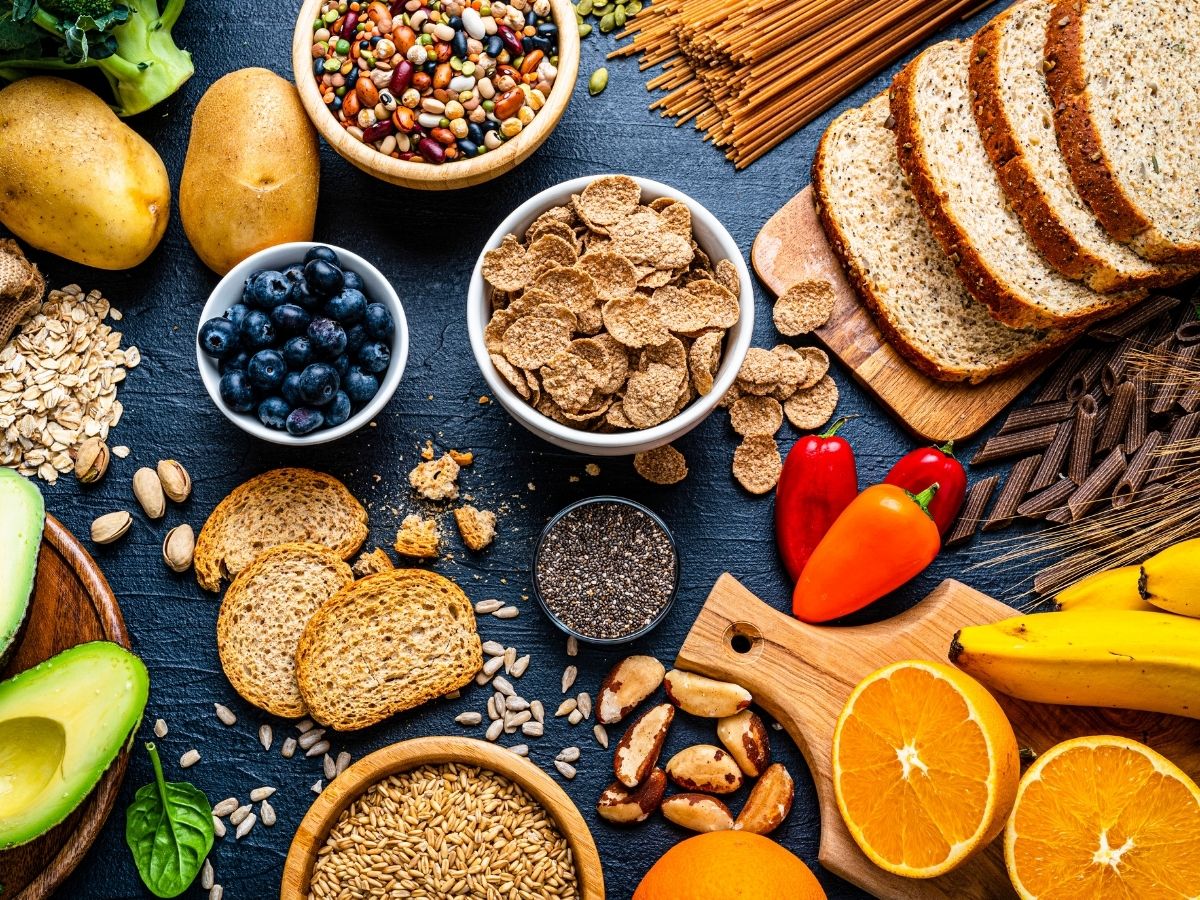
Why Fiber Is a Fitness Superfood
When people hear “fiber,” they think digestion—but it’s so much more. Fiber affects blood sugar, appetite, heart health, and even longevity. A diet rich in fiber can help you feel full longer, maintain a lean body composition, and improve your gut microbiome.
Yet, most adults barely eat half the recommended daily amount (25–35 grams). Let’s break down the five main types of fiber and how each benefits your body.
1. Soluble Fiber: The Cholesterol & Satiety Booster
Soluble fiber dissolves in water to form a gel-like substance that slows digestion. This helps regulate blood sugar levels and supports cholesterol reduction.
Best sources: oats, apples, chia seeds, beans, psyllium husk.
Why it matters: keeps you full longer, reduces cravings, and promotes balanced energy levels.
2. Insoluble Fiber: The Digestive Mover
Insoluble fiber doesn’t dissolve—it acts like a brush, sweeping waste through your digestive tract. It supports regular bowel movements and helps prevent constipation.
Best sources: vegetables, nuts, seeds, and whole grains.
Why it matters: a consistent digestive rhythm helps your body absorb nutrients efficiently and reduces bloating.
3. Prebiotic Fiber: Feeding the Good Bacteria
Prebiotic fibers are food for your gut bacteria. They ferment in the colon, feeding beneficial microbes that improve digestion, immune health, and even mood.
Best sources: garlic, onions, leeks, asparagus, bananas.
Why it matters: supports a healthier gut microbiome—vital for fat loss and inflammation control.
4. Resistant Starch: The Blood Sugar Stabilizer
This special kind of carbohydrate acts like fiber after cooking and cooling foods such as rice, potatoes, and oats. Resistant starch improves insulin sensitivity and supports gut health.
Best sources: cooked and cooled potatoes, rice, lentils, oats, and green bananas.
Why it matters: stabilizes energy and helps control hunger.
5. Fermentable Fiber: The Gut Healer
Fermentable fiber is broken down by gut bacteria into short-chain fatty acids (SCFAs)—which protect your intestinal lining, reduce inflammation, and support metabolism.
Best sources: beans, apples, flaxseeds, and root vegetables.
Why it matters: promotes a stronger gut barrier and better long-term digestive function.
How Much Fiber Do You Really Need?
- Women: ~25 grams per day
- Men: ~35–38 grams per day
- Athletes: even higher to support nutrient absorption and energy balance
Mixing both soluble and insoluble sources across meals is ideal.
Simple Tips to Boost Fiber Intake
- Add chia or flaxseeds to smoothies or oatmeal.
- Include at least one serving of beans, lentils, or whole grains daily.
- Eat more whole fruit instead of juice.
- Gradually increase fiber to avoid bloating.
Key Takeaway
Fiber is more than a digestion aid—it’s a metabolic powerhouse that supports blood sugar control, fullness, and fat loss. Aim for a variety of fiber types daily to keep your gut strong, your energy balanced, and your fitness goals on track.
